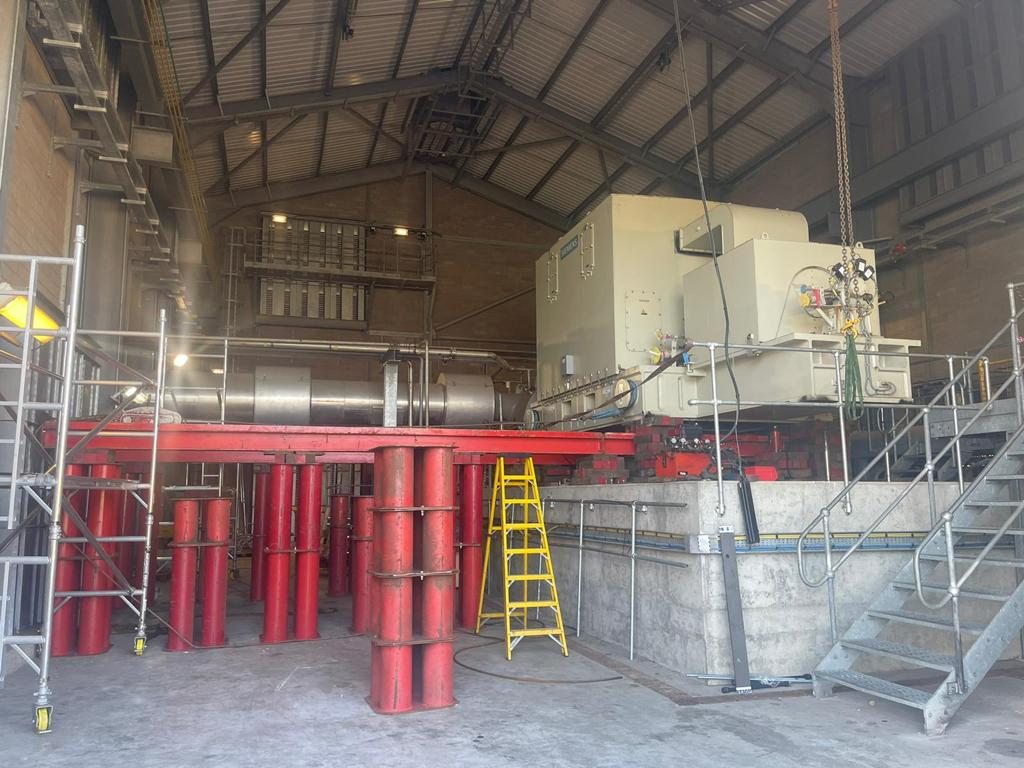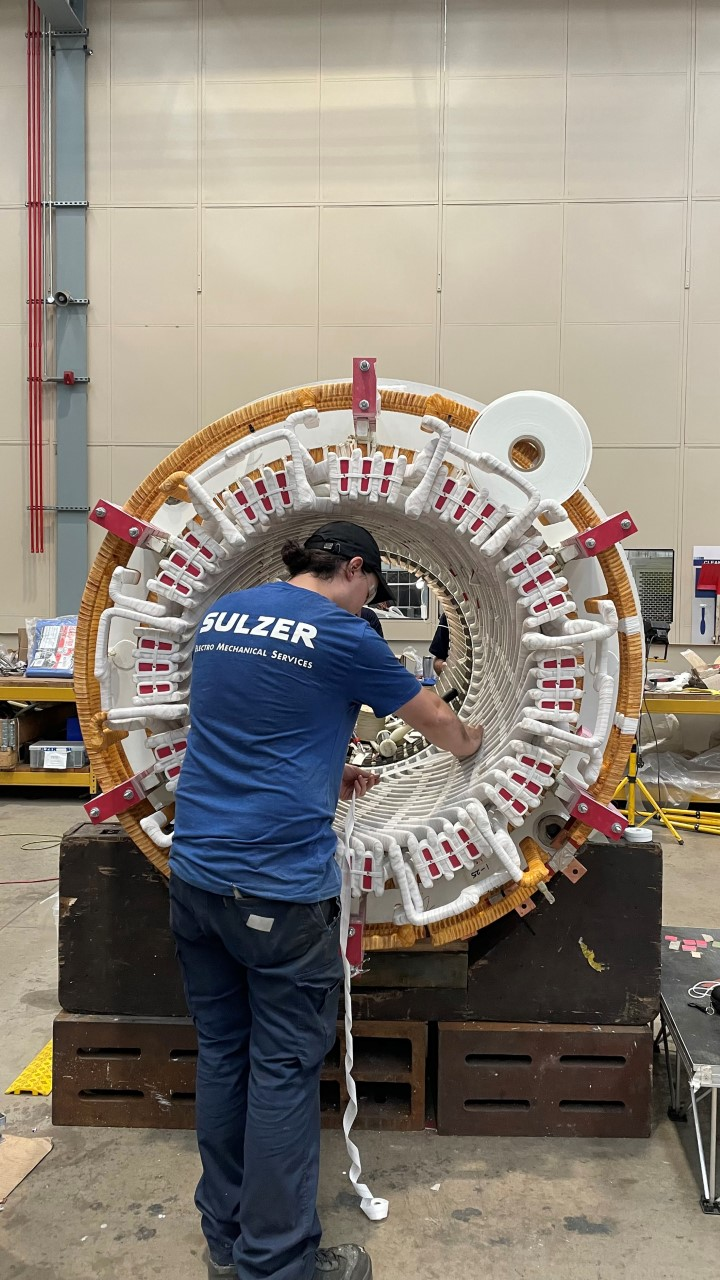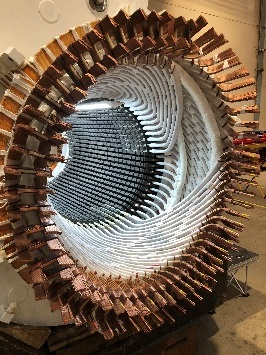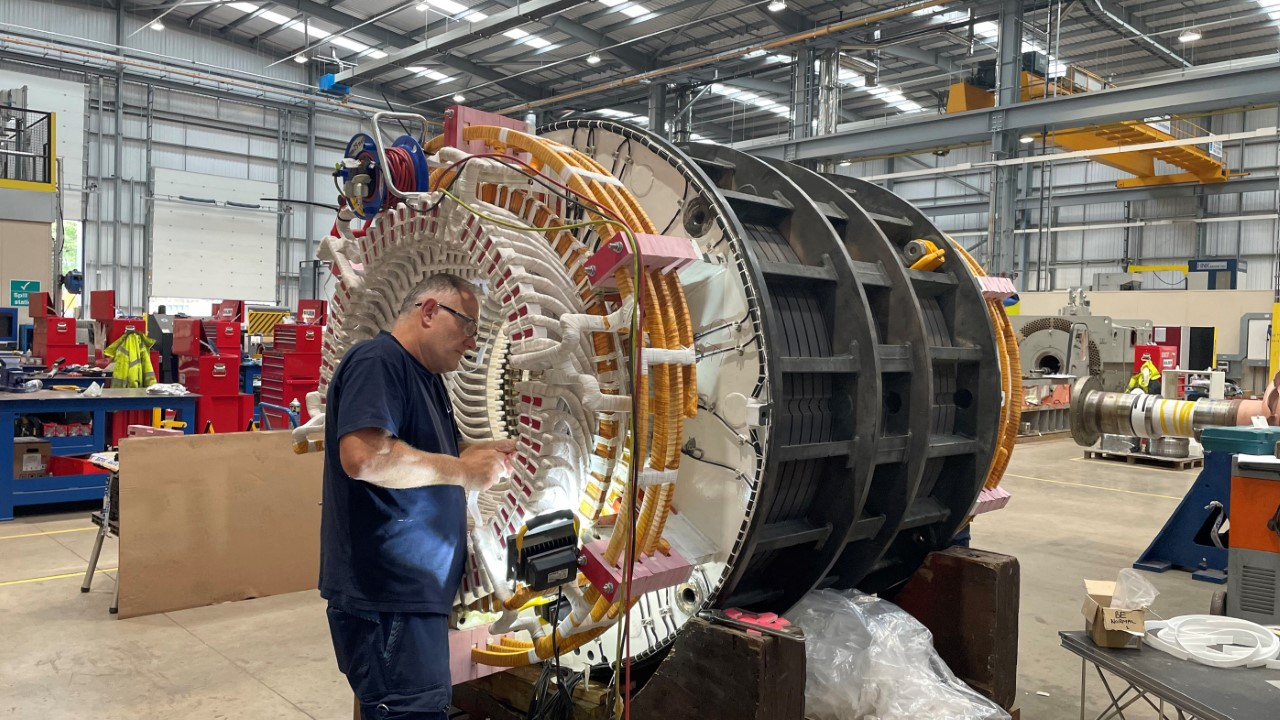Sulzer delivers bespoke motor redesigns for National Grid
With global energy markets under pressure, utility companies are working hard to ensure that millions have reliable access to power. Consequently, when National Grid faced maintenance issues with two motors installed at critical gas booster station sites in England, they approached Sulzer. Delivering turnkey redesigns and rewinds for the complex 16 MW units – Sulzer has helped National Grid to secure gas supply to homes and businesses nationwide.
Gas booster stations are critical strategic components in the UK’s gas supply network. At these facilities, motor driven compressors are used to ensure the distribution of gas to where it is needed. Consequently, any reliability issues at these sites can adversely affect gas supplies if not resolved promptly.
When motors throw a temperature tantrum
Initially, National Grid identified an issue with two large 16 MW motors, one installed at a compressor site near Wormington in Gloucestershire and the other located close to Churchover near Rugby. The problem arose when resistance temperature detectors (RTDs) embedded inside the motor windings began to fail, compromising the ability of operators to gain accurate temperature readings and condition monitoring data. As the motors were Ex rated, this also threatened the compliance of the installations.
The rare six-phase synchronous motors used at the sites weigh up to 51 tonnes each and can operate at a nominal speed of 5’200 rpm and an overspeed of 6’435 rpm. Controlled by variable speed drives (VSDs) and featuring complex rotors 6.5 meters in length, the bespoke motors are designed to ensure increased demand for gas can be met by speeding up the compressor to push more through the network.
An expert who isn’t off the grid
Rather than go to the motor OEM as it had done in the past, National Grid approached Sulzer to solve the issue. Sulzer is an independent service provider (ISP) for all types and brands of rotating equipment, offering turnkey engineering support from a global network of localized service centers. The company also currently holds a framework agreement with National Grid.
Sulzer determined that replacing the components wasn’t possible due to the RTDs being embedded into the old windings. Instead, it suggested carrying out turnkey redesign and rewind projects to solve the issue. Supporting this assessment, National Grid tasked Sulzer with overhauling the motors.
Take the winding road
The design and installation of replacement RTDs necessitated a complete rewind, testing, reinstallation and commissioning. Changes to the winding would need to be carried out while preserving the Ex certification of the units. Additional RTDs also needed to be installed into the stator to offer better protection for the motors in future. The new RTDs embedded in the middle of the stator slots would help to reduce the risk of failures.
Work would be carried out at Sulzer’s state-of-the-art Birmingham Service Center. As a six-phase motor consists of two three-phase windings working side by side, the project was a complex undertaking. However, with its best-in-class facilities and available space, the Birmingham Service Center could easily accommodate this.
On-site, in-house and on time
At the compressor sites, the motors were raised on hydraulic jacks before being maneuvered on their skids from 2 to 3 m in height onto the back of a low loader. Once delivered to the service center, they were dismantled with the help of a high-capacity crane.
To ensure that the rotor of each motor could be removed safely during disassembly, Sulzer produced custom stub shafts that attached to the end of the large rotors. This allowed each to be removed and moved without impacting or damaging the windings.
The stator redesign and rewind work was supported by Sulzer’s in-house coil manufacturing department, which utilizes a comprehensive database of thousands of coil designs. This helped to expedite the project by eliminating any delays to source spares and ensured consistent quality throughout.
“Due to the bespoke nature of the machine and the technical challenge of replacing the RTDs with a superior substitute, the project required a high level of engineering expertise. This was amply demonstrated by the Sulzer design team, which then fed into the rebuild and equipment procurement, efficiently smoothing the rebuild process,” says Mark Prestt, Project Manager for National Grid.
Open all hours for customers
To ensure total transparency and technical insights to the customer, Sulzer had an open-door policy for National Grid engineers, who could visit the service center and view any part of the process. This close relationship kept National Grid informed of latest project developments, providing additional assurance that all required standards were met during tests and that the repair was proceeding as per the agreed schedule.
Furthermore, as National Grid did not have build documentation for the motors, Sulzer produced custom manuals as part of the project. These will help expedite any future maintenance work on the units.
Full of energy
The motors have now been reinstalled and are supporting operations at both sites, providing consistent temperature data to support condition monitoring – preserving Ex compliance. This has ensured a reliable gas supply during a challenging period for the energy sector.
“From the initial contact with Sulzer, through to final handover back to National Grid Operations, I can safely speak for all concerned at National Grid in recommending Sulzer’s expertise based upon the service received. Sulzer, at all levels, consistently showed commitment, expertise and flexibility throughout the project,” adds Mark.
Never out of gas
Sulzer has provided National Grid with a single, trusted supplier ready to maintain its critical infrastructure in the future. This is backed by a localized service center that can respond quickly and effectively to any reliability challenges.
“We offer a shorter lead time and enhanced technical support compared to our competitors,” says David Rudd, Customer Support Manager at Sulzer. “As we provide turnkey electromechanical engineering services, we were able to manage and complete the project entirely in-house. This meant the challenging works could be delivered faster and with added value to the customer – both important benefits for a national utility.”
By helping to secure maximum availability for the critical gas booster station infrastructure, Sulzer has helped National Grid provide reliable power to millions.

Image 1: At gas booster stations, motor driven compressors are used to ensure the distribution of gas to where it is needed

Image 2: The design and installation of replacement RTDs necessitated a complete rewind, testing, reinstallation and commissioning

Image 3: The design and installation of replacement RTDs necessitated a complete rewind, testing, reinstallation and commissioning

Image 4: Changes to the winding would need to be carried out while preserving the Ex certification of the units.